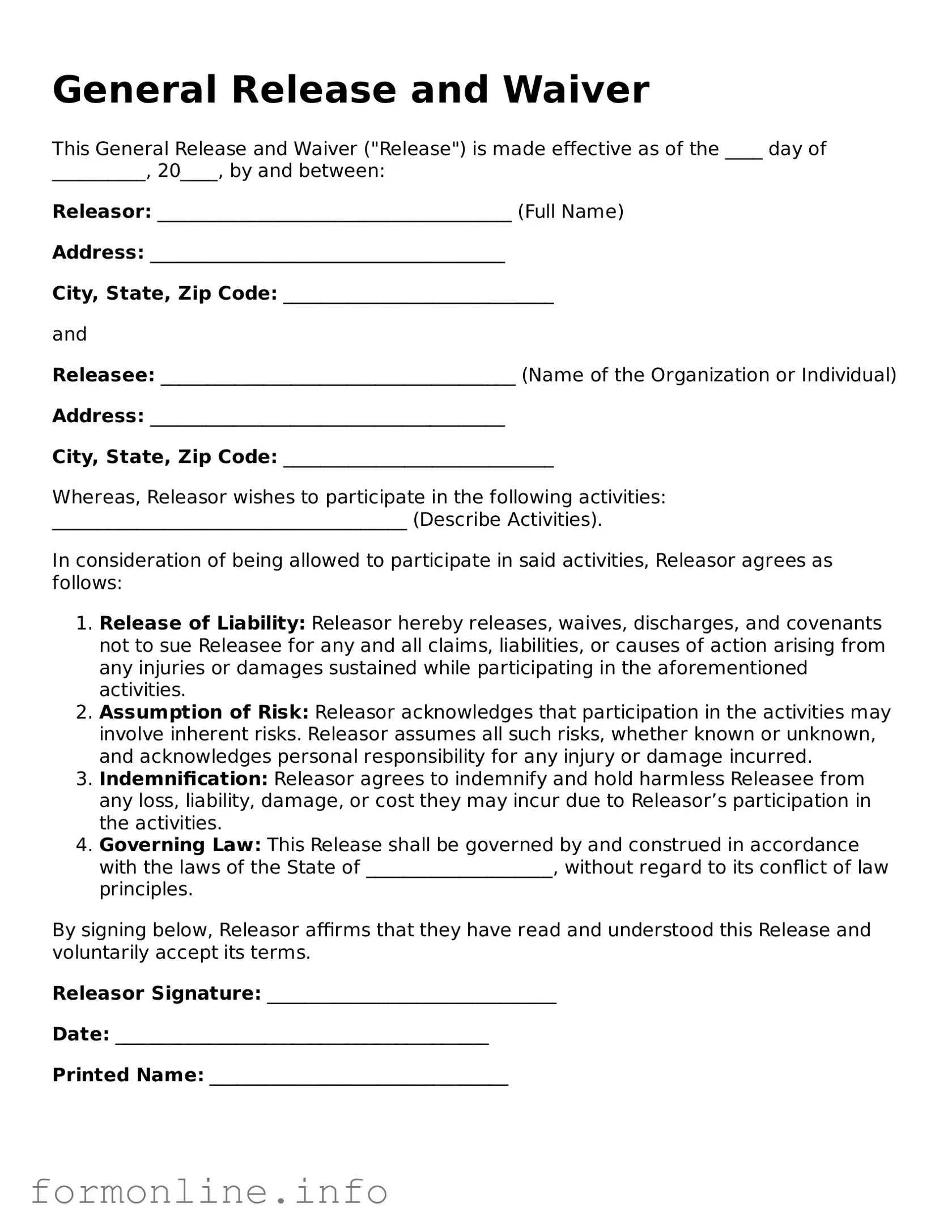General Release and Waiver
This General Release and Waiver ("Release") is made effective as of the ____ day of __________, 20____, by and between:
Releasor: ______________________________________ (Full Name)
Address: ______________________________________
City, State, Zip Code: _____________________________
and
Releasee: ______________________________________ (Name of the Organization or Individual)
Address: ______________________________________
City, State, Zip Code: _____________________________
Whereas, Releasor wishes to participate in the following activities: ______________________________________ (Describe Activities).
In consideration of being allowed to participate in said activities, Releasor agrees as follows:
- Release of Liability: Releasor hereby releases, waives, discharges, and covenants not to sue Releasee for any and all claims, liabilities, or causes of action arising from any injuries or damages sustained while participating in the aforementioned activities.
- Assumption of Risk: Releasor acknowledges that participation in the activities may involve inherent risks. Releasor assumes all such risks, whether known or unknown, and acknowledges personal responsibility for any injury or damage incurred.
- Indemnification: Releasor agrees to indemnify and hold harmless Releasee from any loss, liability, damage, or cost they may incur due to Releasor’s participation in the activities.
- Governing Law: This Release shall be governed by and construed in accordance with the laws of the State of ____________________, without regard to its conflict of law principles.
By signing below, Releasor affirms that they have read and understood this Release and voluntarily accept its terms.
Releasor Signature: _______________________________
Date: ________________________________________
Printed Name: ________________________________
